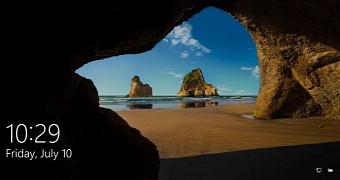Microsoft has patented a new technology that makes it possible for the lock screen to become a more personal space, displaying sensitive information that you wouldn’t otherwise want others to be able to see.
The lock screen is the part of the operating system that almost everyone can see without even logging in with their credentials, but Microsoft has found a way to use the lock screen in a more personal way.
Biometric authentication
Using biometrics, Windows 10 could at some point be able to provide users with access to personal information on the lock screen, the patent reveals (via MSPU). Specifically, a new security system would be able to allow you to quickly authenticate and get access to a personalized lock screen which would include information that you choose to show.
“If it is determined that the measure of confidence satisfies one or more criteria, then personal information associated with the user is selectively rendered to the lock screen while the computing device is in the locked state,” the patent explains.
“If it determined that the measure of confidence does not satisfy the one or more criterion, then such personal information may be suppressed from the lock screen. The foregoing technique may also be applied to selectively provide or deny access to certain functionality of the computing device via the lock screen.”
If this technology ever makes it to our computers, then the lock screen can become a more helpful replacement to the desktop, providing us with quick access that would only be available after logging in. For example, sticky notes or messages can be displayed directly on the lock screen without us having to provide our usernames and passwords.
For the moment, however, this is still in patent stage, and it could take a while until it’s included in Windows 10, but it’s very clear that Microsoft is already looking into ways to maximize the full potential of every little OS feature. Including the lock screen, that is.

 14 DAY TRIAL //
14 DAY TRIAL //